The Tower of London |
|
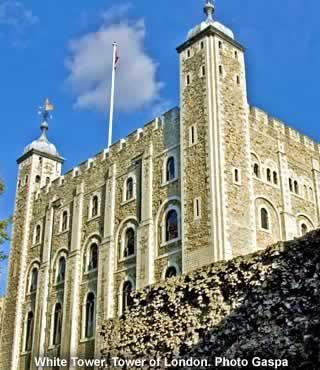 |
|||
A riverside Royal Palace, that became a place of fear |
|||||||||
Listen to this article |
|||||||||
|
|||||||||
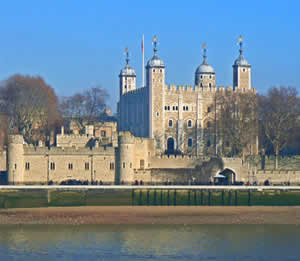 The Tower of London Photo TourNorfolk |
|||||||||
The Tower of London was built as a royal palace and fortress. The name Tower comes from the original central White Tower, built by William the Conqueror in 1078. It was intended to protect the Norman’s from both locals as well as future invaders, built in stone brought in from Caen in France, a popular Norman building material. In the 12th century, King Richard the Lionhart enclosed the Norman Tower with a wall and moat. The tower was later whitewashed and this is how it derived its name. Various other towers have been added to the complex over the centuries, including Beauchamp Tower, Bell Tower and Bloody Tower. |
|||||||||
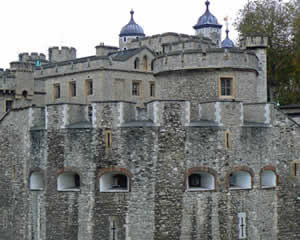 The Tower of London was built by William the Conquerer, following the Norman invasion of England 1066 Photo TourNorfolk |
|||||||||
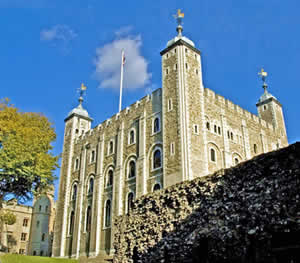 The White Tower, the first of the towers to be built in 1078 Photo Gaspa |
|||||||||
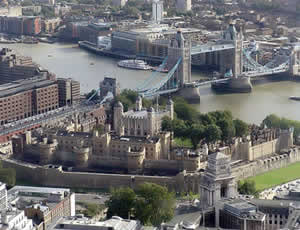 An aerial view of the Tower of London, adjacent to Tower Bridge Source WikiMedia (PD) |
|||||||||
|
|||||||||
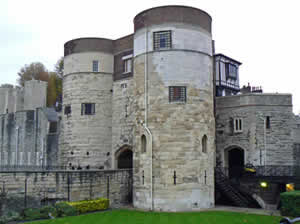 The Byward Tower, part of the outer defences Photo TourNorfolk |
|||||||||
Although the Tower's primary function was a fortress and royal palace, it became a place of fear to those who had committed treason or threatened the throne, as it also served as a prison and a place of execution and torture. Some famous tower prisoners included King Henry VI, who was imprisoned and then later murdered in 1471, Queen Elizabeth I, who was held for 2 months in 1554 and Guy Fawkes, for his part in the gun powder plot. The last state person to be held in the tower was Rudolf Hess, deputy leader of the Nazi party in May 1941. |
|||||||||
Inside the torture chambers of the Tower, various implements of torture were used; such as the Scavenger’s Daughter, a compression device that forced blood out your nose and ears, and the Duke of Exeter's Daughter, which was a rack where you were stretched. |
|||||||||
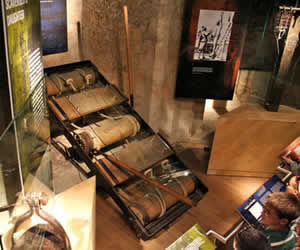 The Scavangers Daughter, a form of medieval torture, on display in the Lower Wakefield Tower Photo Rudolf Schuba |
|||||||||
Criminals were usually executed by hanging at one of the public execution sites outside the Tower, such as Tower Hill, where crowds could gather to watch. 7 nobles, 5 of whom were ladies, were beheaded privately on Tower Green inside the walls including Anne Boleyn in 1536. |
|||||||||
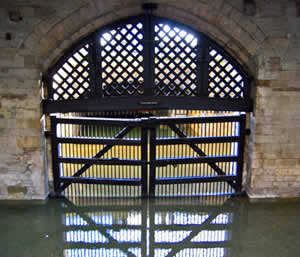 Traitors Gate, where condemned prisoners were brought into the Tower by boat Source WikiMedia (PD) |
|||||||||
Other uses for the tower include an armoury, a treasury, a Royal Mint, a public records office, an observatory, and even a zoo - a Royal Menagerie which was established at the Tower in the 13th century containing lions and tigers, and was eventually moved to the new London Zoo in 1835. |
|||||||||
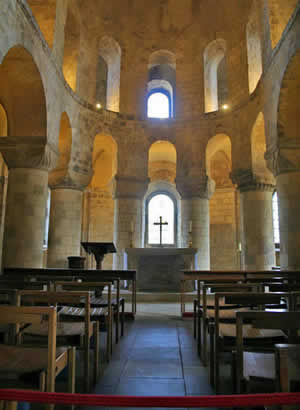 St John's Chapel in the White Tower Photo i am jae |
|||||||||
|
|||||||||
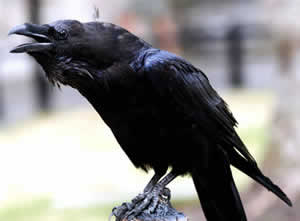 One of the Ravens at the Tower, which are looked after by the Ravenmaster Photo Arbron |
|||||||||
Since 1303, the Tower has been home to the Crown Jewels, worn by the UK sovereign during coronation and other state functions. They consist of crowns, orbs, sceptres, swords and rings. The jewels were stolen from Westminster Abbey and following their recovery, they were locked away in the Tower and could be viewed after paying a fee to a custodian. However, this arrangement ended after Colonel Thomas Blood stole the Crown Jewels by binding and gagging the custodian. |
|||||||||
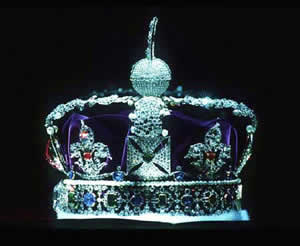 Imperial State Crown, one of the Crown Jewels, containing 2,868 diamonds, 273 pearls, 17 sapphires, 11 emeralds, and 5 rubies Source WikiMedia (PD) |
|||||||||
Again, the jewels were recovered and a special Jewel House was then built and defended by the famous Yeoman Warders. These armed guards were formed in 1485 and are nicknamed Beefeaters after their special position as the King’s bodyguard, which allowed them to eat beef from the Kings’ table. They still guard the tower to this day, in their smart Tudor uniforms. |
|||||||||
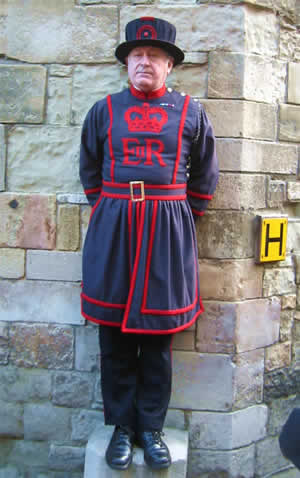 Yeoman Warder or Beefeater, who have been guarding the Tower since the 14th century Photo andresmh |
|||||||||
|
|||||||||
The Tower of London is open daily 10am to 5.30pm. Entry costs around £17 for adults, £11 child. Discounts for online bookings. Tel: 0844 482 7777 |
|||||||||
|
Pocket Britain is optimised for use on a smartphone or tablet with internet access. All content is subject to copyright. All reasonable methods have been used to ensure information supplied is accurate at the time of publication. However, it is advisable to check information before relying on it. Privacy Policy |